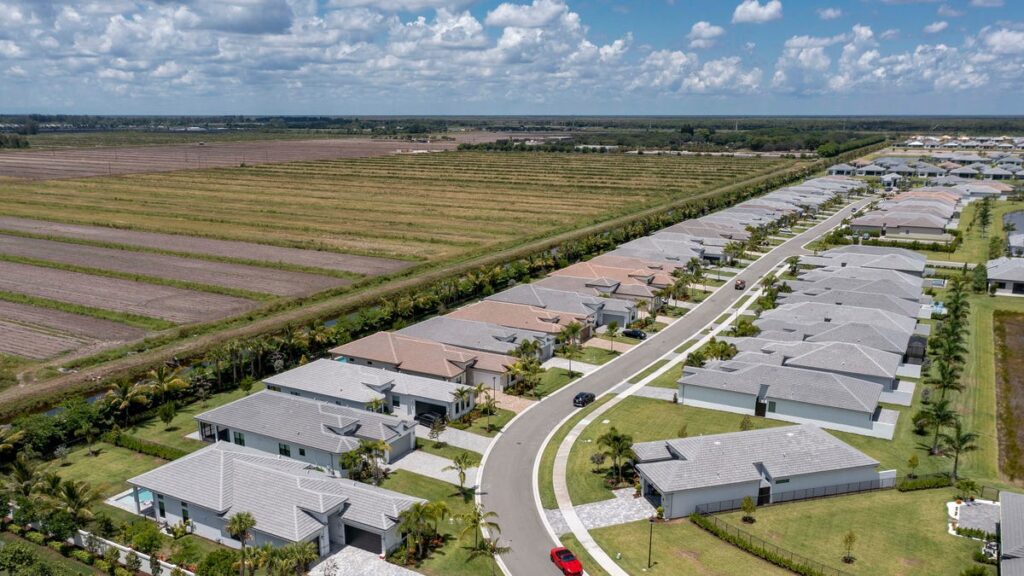Palm Beach County’s Thriving Real Estate Market: Insights and Implications for Residents
In the evolving landscape of Palm Beach County’s real estate market, 2024 has witnessed significant developments that underscore a robust residential sector. Recent reports reveal trends in construction, property values, and housing affordability, providing a multifaceted perspective on the current scenario.
Strong Construction Growth in Residential Units
A remarkable addition to Palm Beach County’s housing inventory has occurred over the past year. Notably:
- 22 new apartment complexes have been introduced, resulting in nearly 3,800 rental units.
- Nearly 3,000 single-family homes have been built, contributing to an overall increase in taxable property value, estimated at close to $5 billion.
Property Appraiser Dorothy Jacks presented these findings at a county commission meeting, highlighting the need for accurate property assessments for upcoming budgets.
Residential Market Strength
Despite a 3% decrease in residential sales compared to 2023, the median sales price has increased by 5%, indicating a resilient market. Jacks noted:
"The residential housing market continues to be quite strong."
[link-whisper-related-posts]
The ongoing demand for housing is evident, even as single-family home sales surpass the million-dollar mark in various areas.
Insights on Property Valuations
- County appraisers are in the process of estimating property values as of January 1, 2025, with more comprehensive figures expected to be shared with budget officials in June.
- New constructions typically register with tax rolls upon receipt of occupancy certificates or when deemed substantially complete.
High Demand for Rental Units Amidst Affordability Concerns
Palm Beach County has emerged as one of the top 10 small-rental markets in the U.S., according to Rent Café. In 2024:
- An average of 13 prospective renters competed for each available unit, driven by a low 5% vacancy rate.
However, the challenge of affordability looms large:
- Only 25% of newly built rental units are designated as affordable or workforce housing, intensifying concerns among businesses aiming to attract talent.
The Rental Landscape: Tenant Struggles
As per the 2024 U.S. Department of Housing and Urban Development (HUD) data, the fair market rent for a two-bedroom apartment in the area stands at $2,226 per month. To avoid financial strain, tenants would need an annual income of approximately $90,000—significantly above the county’s average annual wage of $70,979. Consequently:
- 55% of renters in Palm Beach County are regarded as cost-burdened, spending more than 30% of their income on housing.
Noteworthy New Developments
Several significant apartment projects completed in 2024 include:
-
350 S. Australian Avenue, West Palm Beach
- 457 apartments, 22-story tower
- Preliminary assessment: $114 million
-
575 Rosemary Apartments, CityPlace, Downtown
- 361 units, mixed-use, 21-story tower
- Expected assessment: $100 million
- 2085 S. Congress Ave., Palm Springs
- 264 apartments in three-story buildings
- Anticipated assessment: $56 million
Notably, these complexes are expected to set market rental rates that might be unattainable for many workers.
Implications for Single-Family Housing
The single-family home sector remains pivotal to Palm Beach County’s growth. Key highlights include:
- GL Homes is spearheading the construction of nearly 500 high-end homes in its coveted developments.
- Sales achieved in areas like Westlake and Avenir have infused over $1 billion into the local economy.
Dorothy Jacks remarked that new construction trends warrant close observation due to their potential fluctuations year to year.
Conclusion
The ongoing real estate developments in Palm Beach County reflect a robust market with a blend of challenges and opportunities. High demand for apartment units juxtaposed with escalating rental prices suggests that local residents may face continued struggles with housing affordability. Stakeholders are encouraged to pay attention to these evolving dynamics, which will have lasting implications on the affordability and accessibility of housing in the region.
For more information on housing trends, visit the following resources: Palm Beach Post and HUD.


